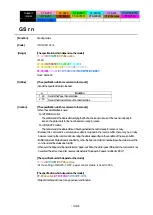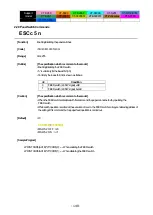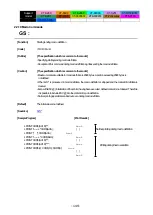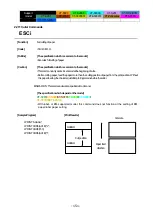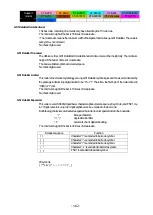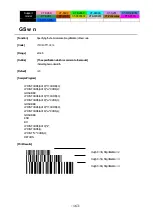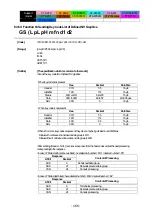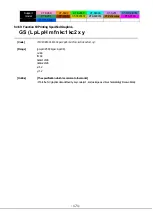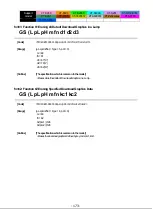
Support
model
CT-S280
CT-S300
CT-S2000
CT-S4000
CT-S251
CT-D150/E351
CT-S281
CT-S310
CT-S801/851
CT-S601/651
CT-P29x series
CT-S310II
CT-D151/E651
- 158 -
[Caution]
For (1):
• This command ends with a NULL code.
• For UPC-A or UPC-E, the bar code is printed when 12 bytes of bar code data have
been entered, and the subsequent data is handled as normal data.
• For JAN13, the bar code is printed when 13 bytes of bar code data have been entered,
and the subsequent data is handled as normal data.
• For JAN8, the bar code is printed when 8 bytes of bar code data have been entered,
and the subsequent data is handled as normal data.
• The data of ITF bar code must have an even number of columns. Should the data have
an odd number of columns, the last column is ignored.
For (2):
• Numeral “n” indicates the number of data items, and the subsequent “n” bytes of data
are handled as bar code data.
• If “n” is out of the range, the processing of the command is aborted, and the subsequent
data is handled as normal data.
For STANDARD MODE:
• If “d” is out of the range, only a paper feed is executed, and the subsequent data is
handled as normal data.
• If the bar code is wider than the print area for one line, the bar code is not printed, but
only a paper feed is executed.
• The amount of paper feed corresponds to the height of the bar code (including the HRI
characters if HRI character printing is specified), irrespective of the line feed width set
by a command such as ESC 2 or ESC 3.
• This command only works if no data exists in the print buffer. If any data exists in the
print buffer, the data subsequent to “m” is handled as normal data.
• After the bar code is printed, the beginning of the line is taken as the start position for
the next print.
• This command is not affected by any print modes (emphasis, double strike, underline,
and character size), except for the inverted character mode.
For PAGE MODE:
• This command only maps the bar code, without performing a printout. After the bar
code is mapped, the dot next to the last data item of the bar code is taken as the start
position for the next data mapping.
• If “d” is out of the range, the processing of the command is aborted, and the subsequent
data is handled as normal data. In this case, the data mapping start position does not
move.
• If the bar code is wider than the print area, the bar code is not printed, but the data
mapping start position is moved to the left end of the non-print area.

